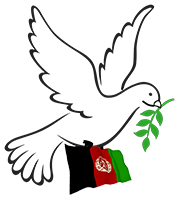A number of refugees who have lived in Pakistan for over four decades are once again appealing to the government to extend their stay.
Only one day remains until the deadline set by Pakistan for the expulsion of Afghan refugees from the country.
A number of refugees who have lived in Pakistan for over four decades are once again appealing to the government to extend their stay.
Zabit Khan, a refugee who has lived in Islamabad for nearly forty years, says he has established a business over the years, and expulsion from Pakistan could seriously disrupt his life.
Zabit Khan, Afghan refugee in Pakistan: “Give us time because we cannot suddenly relocate our business. We’ve worked here for forty years or more and have built relationships with people. This will cause us problems.”
However, the Pakistani government has declared that only holders of immigration visas will be allowed to live in the country.
The Afghan Embassy in Islamabad also stated that efforts are underway to facilitate visas for Afghan refugees residing in Pakistan.
Sardar Ahmad Shakeeb, acting ambassador of the Islamic Emirate in Islamabad, said regarding visa facilitation efforts: “We are easing the visa process so that Afghans are not forced to live illegally in Pakistan.”
Meanwhile, the Afghan refugee representative in Pakistan has also urged the government to halt the deportation process.
Shaheen Zakhil, a representative of Afghan refugees in Pakistan, said: “The Pakistani government must reconsider its decision because Afghans are facing many difficulties here, and their economic situation is also poor.”
Additionally, the prime minister of the Islamic Emirate, in his Eid message, called on neighboring countries not to forcibly deport Afghan refugees.
Abdul Wasi Khadem, the chief of staff of the prime minister’s office, said: “We ask countries hosting Afghan refugees to provide them with facilities instead of forcibly deporting them.”
This comes as Pakistan has set March 31 as the final deadline for Afghan refugees — including holders of ACC and PoR cards — to leave the country, particularly from Islamabad and Rawalpindi.
 Afghanistan Peace Campaign
Afghanistan Peace Campaign

